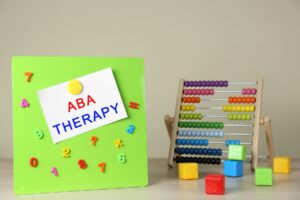As parents, caregivers, or educators, understanding the differences between Autism Spectrum Disorder (ASD) and Attention Deficit Hyperactivity Disorder (ADHD) is crucial to support the unique needs of children with these conditions. While both are neurodevelopmental disorders with overlapping symptoms, there are some key distinctions to be aware of [1].
Social Interaction
Autism: Children with ASD often struggle with social interaction, which may include difficulty understanding non-verbal cues, maintaining eye contact, and forming and maintaining relationships [2]. They may also exhibit repetitive behaviors and have restricted interests [3].
ADHD: Social skill challenges in children with ADHD usually stem from impulsivity, inattention, or hyperactivity, rather than an inherent difficulty understanding social cues [4].
Communication
Autism: ASD can be associated with delayed language development or difficulty using language effectively in social situations [5]. Children with ASD might also struggle with understanding metaphors or sarcasm [6].
ADHD: Communication issues in ADHD primarily stem from impulsivity, disorganization, and inattention, leading to interrupting conversations, difficulty following instructions, or trouble expressing thoughts clearly [7].
Repetitive Behaviors
Autism: Repetitive behaviors, such as hand-flapping, rocking, or insistence on routines, are more common in individuals with ASD [8].
ADHD: Repetitive behaviors are generally not a prominent feature of ADHD [9].
Restricted Interests
Autism: Children with ASD may have narrow, intense interests or preoccupations that can interfere with their daily functioning [10].
ADHD: While individuals with ADHD may have strong interests, they usually do not exhibit the same level of intensity or rigidity as those with ASD [11].
Attention
Autism: Attention challenges in ASD may be more selective, with intense focus on preferred topics or activities [12].
ADHD: Attention problems in ADHD are more pervasive, making it difficult to focus on a variety of tasks or activities, even if they are enjoyable [13].
Sensory Issues
Autism: Sensory sensitivities or aversions, such as being bothered by loud noises or specific textures, are more common in individuals with ASD [14].
ADHD: Sensory issues are not a primary characteristic of ADHD [15].
Remember, only a qualified healthcare professional can diagnose these conditions. If you suspect your child may have ASD or ADHD, consult with a specialist for personalized advice and support.
Learn More about Autism Treatment Options
For more information or a free consultation, contact us today. We offer specialized, evidence-based early intervention ABA therapy programs for children aged 18 months to 6 years old.
References:
[1] https://www.ncbi.nlm.nih.gov/pmc/articles/PMC3663485/
[2] https://www.ncbi.nlm.nih.gov/pmc/articles/PMC2533819/
[3] https://www.ncbi.nlm.nih.gov/pmc/articles/PMC2664648/
[4] https://www.ncbi.nlm.nih.gov/pmc/articles/PMC3495672/
[5] https://www.ncbi.nlm.nih.gov/pmc/articles/PMC4137411/
[6] https://www.ncbi.nlm.nih.gov/pmc/articles/PMC3068646/
[7] https://www.ncbi.nlm.nih.gov/pmc/articles/PMC3083025/
[8] https://www.ncbi.nlm.nih.gov/pmc/articles/PMC2664648/
[9] https://www.ncbi.nlm.nih.gov/pmc/articles/PMC3495672/
[10] https://www.ncbi.nlm.nih.gov/pmc/articles/PMC2664648/




